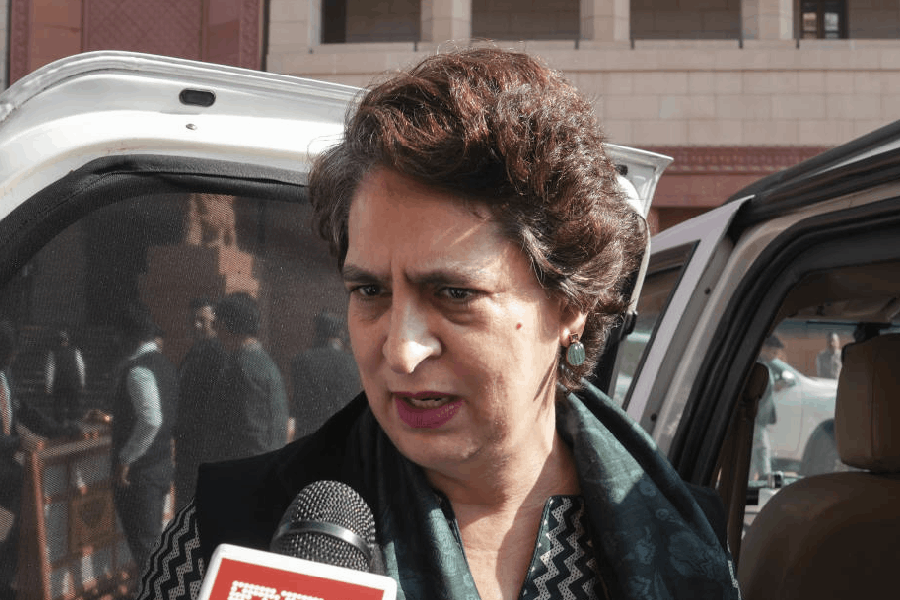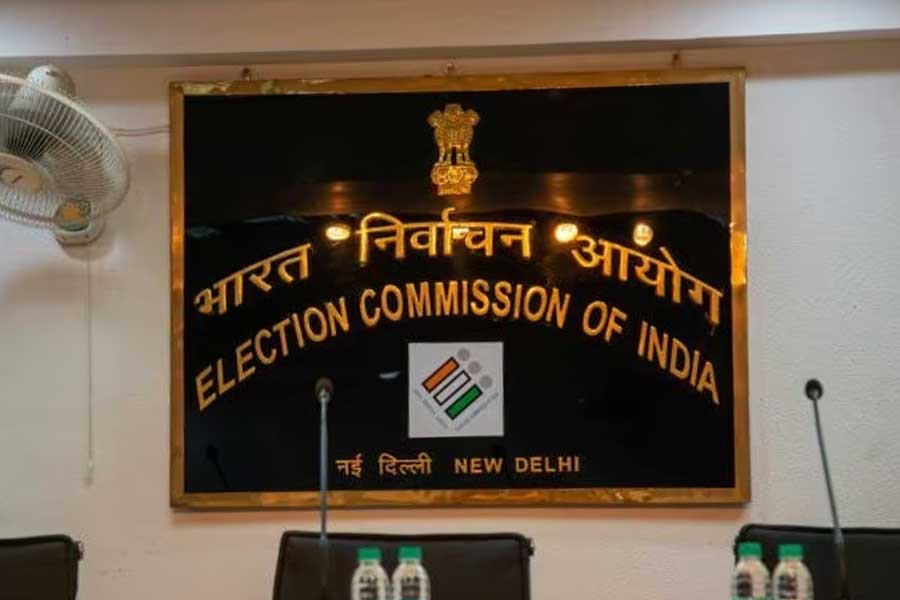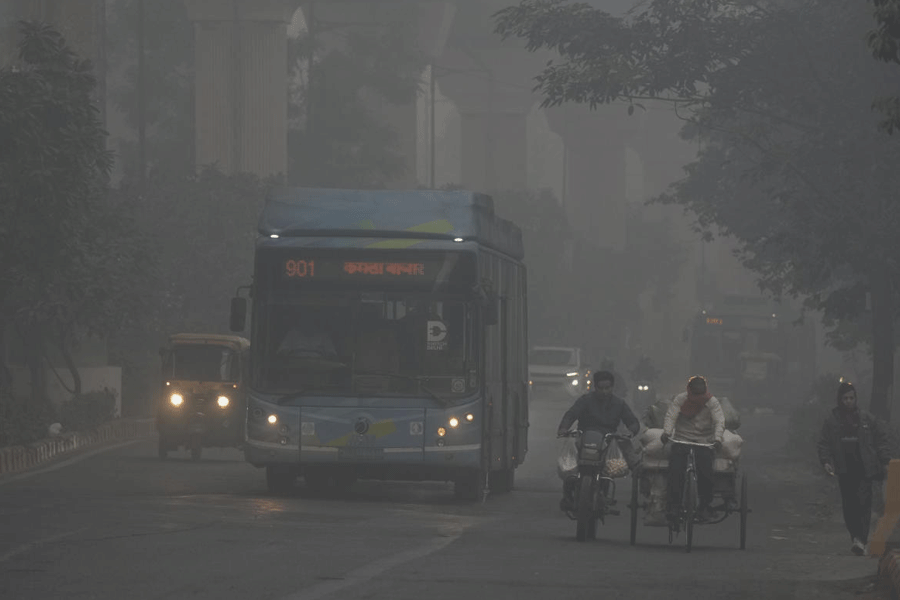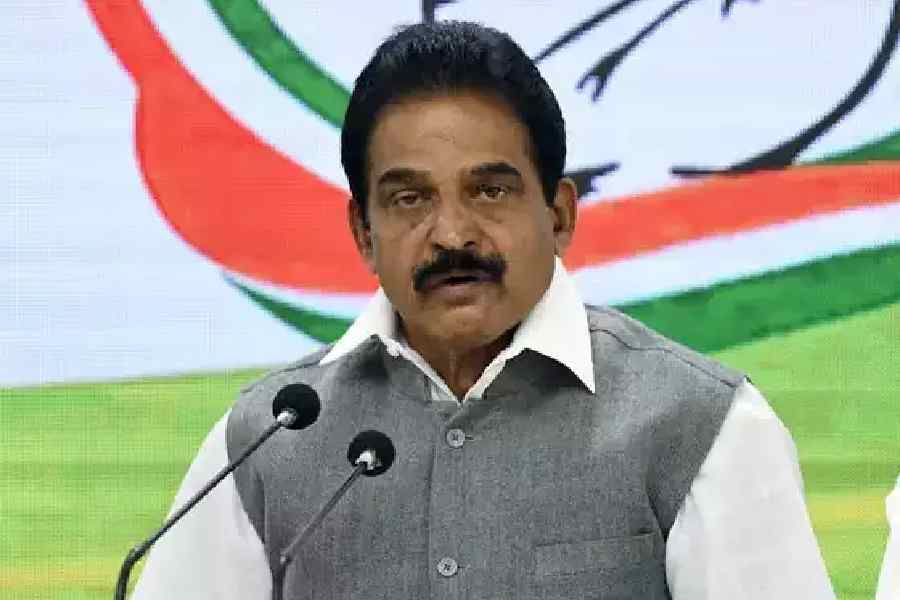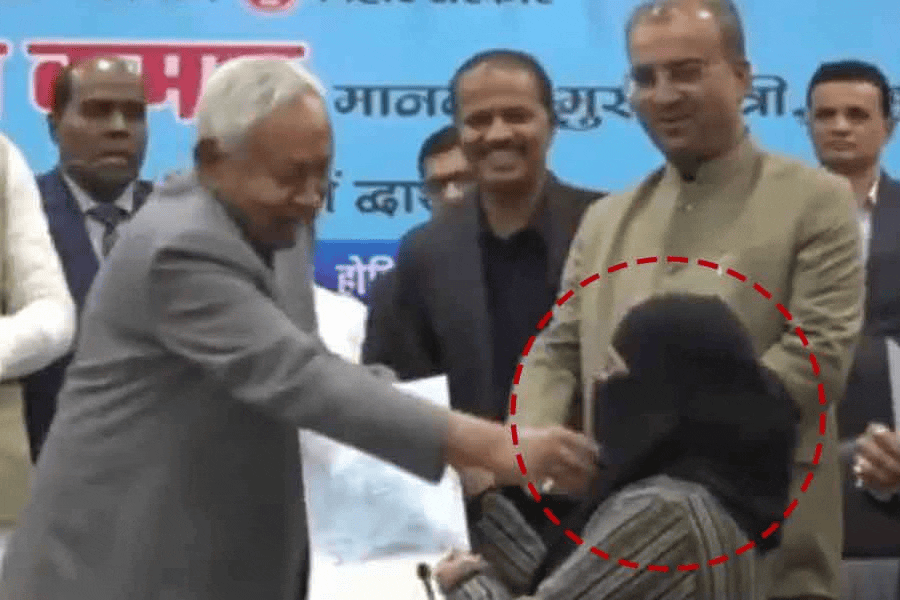 |
| Paramilitary soldiers stand guard near a barricade during curfew in Srinagar on Friday. (AP) |
New Delhi, Aug. 29: For six days now, no newspapers have been printed in the curfew-ridden Kashmir Valley; and the ones from outside haven’t been distributed. Local news channels were blanked out by a government order a week ago on the grounds that they were telecasting “inflammatory” images; yesterday local operators retaliated by switching off all national channel links to consumers. Mobile texting was banned throughout Jammu and Kashmir as a “security measure” more than a month ago and cellphone networks are, at best, erratic.
After the outcry over an economic blockade comes the silence of a near-complete information blockade in the Valley.
“It is a dangerous thing when information dies like this,” said Zafar Meraj, editor of Kashmir Monitor, a Srinagar daily. “We haven’t had much exposure to democracy in Kashmir but at least the press had room to operate. Now, suddenly, we can’t and rumours have replaced information.”
Unlike on local television channels, the government has put no restrictions on the print media but the stringent weeklong curfew has made it impossible for newspapers to be printed and distributed.
“What are we to do?” asked another exasperated editor. “We don’t have enough curfew passes for our reporters, we cannot reach our presses. If we somehow managed, we would probably find them closed. And if, by some stroke of divinity, we were able to print our editions, how would we distribute them?
“The Valley is frozen under curfew, nobody can get out, most often not even journalists with legitimate curfew passes. The police issue them, the CRPF refuse to honour them, that is the state of things.”
That was Basheer Manzar, editor of Kashmir Images, another Srinagar newspaper. Over the weeks that the crisis escalated, Manzar, like most Valley editors, ran a skeletal operation from his third-floor office off Srinagar’s arterial Residency Road — three reporters, two photographers, an office boy who doubled up as cook in the pantry. They had a generator to work the computers in off-power hours and a ramshackle station wagon to run the CDs to the press on the capital’s outskirts at night. They all shared the linoleum floor in Manzar’s office by night.
“There was no other option,” Manzar said. “We could not go home if we had to keep the paper going. I sent my wife and children back to the village because schools and colleges have been shut for a long time. My young colleagues told their families it was safer to shack up in the office rather than commute each day. But now, with this curfew, even that effort isn’t worth it. We can fill up a newspaper, but we can’t print it or reach it to our readers.”
The Valley has traditionally had a vibrant media culture; even though circulations are small, the readership is huge and varied. Srinagar is home to no less than a dozen major dailies in Urdu and English; most of them print in colour, some are bilingual and all come off state-of-the-art presses.
Some like the Urdu Aaftaab are iconic in that they go back to the pre-Independence era and are living records of Kashmir’s turbulent political history. But the communications revolution has created its own new crop of modern, and popular, newspapers like Greater Kashmir, Monitor and Kashmir Images.
“Like in most places, the newspaper is a morning habit. It is disturbing to say the least to find all of these suddenly gone, especially at a time when so much is happening,” said Javed Jalib, a documentary filmmaker.
“As we sit cooped up in our homes, we are acutely aware that Kashmir is making headlines across the country. The terrible irony is that sitting in the midst of the story, we have no notion of it. I have no access to what is happening in my own neighbourhood. Till yesterday, we had television, but even that is gone now, things have never been so bad.”
Zafar Meraj of Monitor warned of “dangerous consequences” of an information vacuum in the Valley, saying, “I am constantly getting fed rumours that I can neither confirm nor deny. Newspapers play the role of moderating information flow daily, they have credibility, but at the moment, rumours rule because we can’t operate.”
He conceded that the government may have had “good reason” to prohibit local television networks from putting out news but alleged that “double standards” were being applied.
“The situation is surcharged here and some of what the local channels were putting out was potentially inflammatory. In any case, airing news without a licence is illegal,” Meraj said.
“But the same should apply to local channels in the Jammu region. They are airing inflammatory speeches and spreading hatred 24 hours a day and there exists no ban on them. Do separate sets of law apply in Kashmir and in Jammu?”


